-
San Francisco International Film Festival 2010
FILMLEAF SFIFF 2010 COMMENTS THREAD

San Francisco International Film Festival 2010
____________
SFIFF 2010 (April 22-May 6)
MY REVIEWS OF FILMS SEEN AT OR AFTER THE FESTIVAL:
Air Doll (Hirakasu Koreeda 2009)
Alamar (Pedro González-Rubio 2009)
Brand New Life, A (Ouunie Lecomte 2009)
Cargo (Ivan Engler, Ralph Etter 2009)
Domain (Patric Chiha 2009)
Famous and the Dead, The (Esmir Filha 2009)
Gainsbourg (Je t'aime...moi non plus (Joann Sfar) (2010)
Linha de Passe (Walter Salles, Daniela Thomas 2008)
Lourdes (Jessica Hausner 2008)
Loved Ones, The (Sean Byrne 2009)
Man Who Will Come, The (Giorgio Diritti 2009)
Moscow (Whang Cheoul-mean 2009)
My Dog Tulip (Paul and Sandra Fierlinger 2009)
My Queen Karo (Dorothée Van Den Berghe 2009
Pianomania (Robert Cibis, Lilian Frank 2009)
Practice of the Wild, The (John J. Healey 2010)
Restrepo (Sebastian Junger, Tim Hetherington 2010) (
Russian Lessons (Andrei Nekrasov, Olga Konskaya 2009)
Seducing Charlie Parker (Amy Glazer 2010)
Splice (Vincenzo Natali 2010)
Transcending Lynch (Marcos Andrade 2010)
White Meadows, The (Mohammad Rasoulof 2009)
Winter's Bone (Debra Granik 2010)
You Think You're the Prettiest, But You're the Sluttiest (Che Sandoval 2008)
MY REVIEWS OF SFIFF FILMS I SAW PREVIOUSLY:
Around a Small Mountain (Jacques Rivette 2009)
Bill Cunningham New York (Richard Press 2010)
Everyone Else (Maren Ade 2009)
Father of My Children, The (Mia Hansen-Løve 2009)
Hadewijch (Bruno Dumont 2010)
Henri-Georges Clouzot's Inferno (Serge Bomberg, Ruxandra Medea 2009)
How I Ended This Summer (Alexei Popogrebsky 2010)
Lebanon (Samuel Moaz 2009)
Making Plans for Lena (Christophe Honoré 2009)
Nénette (Nicholas Philibert 2010)
Night Catches Us (Tanya Hamilton 2101)
Oath, The (Laura Poitras 2009)
Soul Kitchen ((Fatih Akin 2009)
Tehroun (Nader T. Homayoun 2009)
Last Train Home (Fan Tixan 2009)
To Die Like a Man (João Pedro Rodrigues 2009)
White Material (Claire Denis 2009)
Wild Grass (Alain Renais 2009)
I ALSO SAW AT NEW DIRECTORS/NEW FILMS BUT DID NOT REVIEW THESE SFIFF 2010 SELECTIONS:
Northless (Rigoberto Pérezcano 2009)
Pivellina, La (Tizza Covi, Rainer Frimmel 2009)
Nénette and Soul Kitchen I saw in Paris; the others were included either in the NYFF 2009, the Rendez-Vous with French Cinema 2010, or New Directors/New Films 2010.

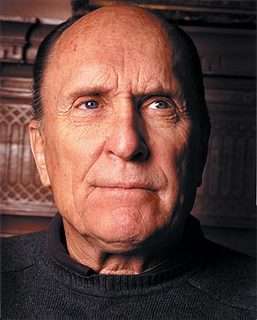

THE SFIFF WILL BE HONORING WALTER SALLES AS WELL AS ROBERT DUVALL AND JAMES SCHAMUS THIS YEAR (ABOVE) .
AWARDS ARE GOING TO ROGER EBERT AND DON HERZFELDT TOO.
An overview
The festival opening night film was Jean-Pierre Jeunet's Micmacs, a film about one man's war against weapons manufacturers. The centerpiece film is Josh Radnor's Happythankyouplease, a tale of twentysomethings livoing in lower Manhattan. The finale will be a showing of the documentary Joan Rivers: A Piece of Work (Ricki Stern, Anne Sundberg), with Ms. Rivers to be honored.
"An array of first- and second-time directors are competing for this year's coveted New Directors Prize with films including Alamar (dir. Pedro Gonzalez-Rubio – Mexico), The Day God Walked Away (dir. Philippe van Leeuw – France/Belgium), and Susa (dir. Rusudan Pirveli – Georgia).
Entries into the World Cinema category include Cyrus, the new, mature film from mumblecore heroes the Duplass brothers starring Marissa Tomei, John C. Reilly and Jonah Hill that was a hit at Sundance. Other highlights are Coco Chanel & Igor Stravinsky (dir. Jan Kounen – France), Air Doll (dir. Hirokazu Kore-eda – Japan), and I Am Love (dir. Luca Guadagnino – Italy) starring Tilda Swinton.
In addition to the films, there’s a multitude of awards and tributes during the festival. This year’s recipients include actor Robert Duval (Peter J. Owens Award), director Walter Salles (Founder’s Directing Award), and screenwriter James Schamus (Kanbar Award). All three will be honored with screenings, clips, and live interviews discussing their work. Roger Ebert will also be honored with the Mel Novikoff Award for his work in influencing the public’s knowledge and appreciation of world cinema. Don Hertzfeldt will receive the prestigious Golden Gate Persistence of Vision Award for his outstanding work in animation
One of the biggest changes to this year’s festival is the expansion of the Live & Onstage program. Rachel Rosen, director of programming for the San Francisco Film Society notes “live appearances by special guests are one of the most exciting aspects of the festival,” and she’s not lying.
This year there are some great interactive events with influential names in the business. A Conversation with T Bone Burnett has the Oscar- and Grammy-winning musician discussing his experience working on acclaimed films like O Brother, Where Art Thou? and Crazy Heart.
Those looking to laugh should check out A Drunken Evening with Derek Waters and Wholphin.Writer/actor Derek Waters will screen some of his acclaimed short films, including his internet sensation Drunk History series, followed by a conversation with Wholphin editor Brent Hoff."--Martian Malloy, SFStation.
Last edited by Chris Knipp; 08-06-2014 at 01:55 PM.
-
Giorgio Diritti: The Man Who Will Come (2009)--SFIFF
Giorgio Diritti: The Man Who Will Come (2009)--SFIFF
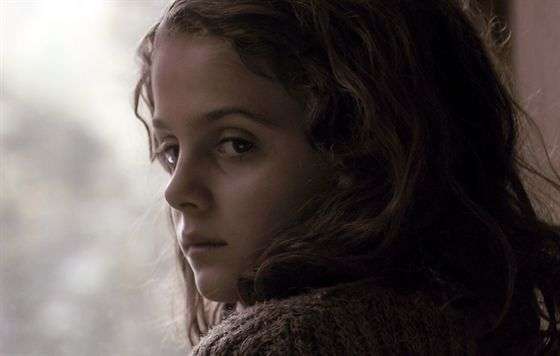
GRETA ZUCCHERI MONTANARI
Flawed telling of a horrific story
Between September 29 and October 5 1944 from Monte Sole, an area of the Appenine Mountains near Bologna, a Nazi SS. officer named Weder reported "the execution of 728 bandits," according to one writer; most accounts say the actual number was 770. The victims in fact were simply villagers -- women, children and old men for the most part -- massacred in the Marzabotto incident, an act of vicious revenge carried out after the Italian partisans in the region had killed a few German soldiers and it was suspected that the locals were protecting them.
Diritti meticulously builds up his picture of the period and the people with a large and talented cast speaking in Bolognese dialect so remote from standard Italian the film is subtitled for Italian viewers. This is a story never told on film before, an eye opener for anyone and a deeply moving story for Italians: L'uomo che verrà was a sensation at last year's Rome Film Festival, where it won both the grand jury prize and the audience award. It is powerful festival material.
Precise realism and a harrowing viewing experience as the horrific murders of the innocent are depicted in a prolonged sequence do not save the film, however, from a measure of sentimentalism and artificiality that grows out of the loving cameos of villagers and picturesque scenes that romanticize their harsh life whether in dazzling winter snow or in a summer of bursting flowers and CGI lightening bugs.
The villagers are mostly farmers whose rustic charm and simplicity director Diritti heightens. There are various points of view presented, though only Italian; the German dialogue is not even translated. At the center of the tale is an eight-year-old girl of preternatural beauty, Martina (Greta Zuccheri Montanari), who wanders around freely, miraculously managing to escape alive. She has already gone mute after seeing a brother stillborn, but ends by saving another newborn male child born at a time of horror. Her mother and father have been killed. Lead actress Maya Samsa (central in Bellocchio's Good Morning, Nightt) plays Martina's mother Lena, beautiful too but weary. One can wonder at the interiors, the clothes, the rangy boys with gaunt but handsome faces, the priests, the schoolteachers, the toothless old men, evoking Rossellini and Pasolini -- but, alas, with a mainstream touch, and looks outstrip words when some speeches are wooden or conversations lack natural rhythm. This is closer to the Taviani brothers of La notte di San Lorenzo. -- another tale of Italian villagers fleeing Nazis -- but without that film's clearcut narrative trajectory.
The difference here, commendable in principle yet creating structural weaknesses, is that Diritti eschews a discernible story line. The early sequences are far too random, and even as the terrible event comes on, scenes tend to jump forward without any particular logic. What's made clear -- though this too is a kind of idealization -- is that the country folk are proud and independent, having no more use for the fascists than for the Germans, considering war a foolish game for the rich and powerful. Yet it's also noted that the local partisan leader, "The Wolf," "can't lead" in the view of some because he refuses to engage in politics. The film's effort to dramatize a peasant point of view is admirable, but tends to sentimentalize. There is no attempt to provide a rounded picture of the Germans, or to explain what led up to their atrocity.
Italians sometimes complain their cultural heritage is so rich it's stifling, leaving them with nothing new to say. Some of their contemporary art suffers from refinement of technique; it's too steeped in tradition to move forward. Diritti's film faces that problem. Furthermore, chronicling a very specific event from wartime Italian history about which feelings are intense leaves even less wiggle room. Andrzej Wajda encountered the same problem with his Katyn.
Seen at the San Francisco International Film Festival 2010, where the digital projection -- ironically because much of the cinematography is beautiful -- further heightened the digital camerawork's flat lighting effects. As Variety reviewer Jay Weisberg wisely comments, the use of a children's choir for background tips the scale dangerously into sentimentality, especially given the use of a mute girl as the central figure. Diritti wrote, directed, and edited. Diritti's 2005 feature, The Wind Blows Round, was well received.
Last edited by Chris Knipp; 05-16-2010 at 02:39 PM.
-
Hirokazu Koreeda: Air Doll (2009)--SFIFF
Hirokazu Koreeda: Air Doll (2009)

Nobody feels
Bong Joon-ho's contribution to the trilogy film Tokyo! was about one of Tokyo's hikikomori, radical isolates who carry Japanese shyness to an extreme and refuse ever to go outside. We've also seen Ryan Gosling in Lars and the Real Girl, which shows a young man whose significant other is a lifesize sex toy and whose family goes along with the fiction that "she" is real. Now we have Koreeda's Air Doll (Kûki ningyô) , which in a sense blends elements of both these stories. Hideo (Itsuji Itao) is a waiter living in a miserable industrial suburb who comes home every day to Nozomi, his lovely wife whom he bathes, has sex with, serves dinner to, chats with, and says goodbye to every morning. Nozomi is an inflatable doll. However Nozomi has a secret life of her own in the film, which is exquisitely filmed by Taiwonese cinematographer Mark Lee but succeeds more visually than otherwise. She comes to life after Hideo leaves, morphing into a real woman (played by Korean actress Bae Du-na of The Host and Sympathy for Mr. Vengeance) who displays a sweet, innocent enthusiasm for the world. Unlike Bong's hiddomori episode or Lars, this film is a fairy tale rather than social and psychological study, and at times it becomes preachy, or slips into the realms of the sentimental or the obvious. A fundamental weakness of the concept is that when the air doll goes out into the world, she is played by a real live actress and no longer seems like an air doll, despite wide-eyed looks and jerky movements.
Koreeda (After Life, Nobody Knows) has excelled in spinning out wafer-thin subjects about love, loss, and loneliness into compelling films. Here, working from a 20-page graphic short story published in 2000 by manga artist Yoshiie Gouda, he takes the material further than it is quite capable of going. For the Japanese audience the film may have more meaning, playing successfully as it does with the culture's fascination with cuteness, its predilection for extremes of politesse, and for imitation and mimicry -- and, needless to say, the passive role of women. And there is delicacy here, even though it risks being cloying, and there are thought-provoking moments, despite the didacticism.
Nozomi goes out into the neighborhood and develops a life of her own, getting a job at a video shop (a showcase of the make-believe that teaches her about the world) , meeting her maker, discovering she has a heart and falling in love with another man, the young shop clerk, Junichi (Arata), and developing a friendship with a crippled poet, while still returning to perform her passive duties for Hideo. Eventually her two separate lives become incompatible.
The material is fragile and seems the more so from being spun out too long, into nearly two hours. Air Doll would be better, and have more chance of an international life outside festivals, if radically cut, relieved of the many repetitious physical sequences and a lot of the gratuitous philosophizing. It has a nice electronic score, a fearless performance by Bae Du-na, good use of its old neighborhood overrun by ugly rebuilding, many subsidiary characters that rarely develop three dimensions. Perhaps it is best that no one competes with the manikin subject.
Seen as part of the San Francisco International Film Festival 2010. Included in the Un Certain Regard section of the Cannes Festival, 2009. To be released in the US by Palisades-Tratan Pictures.
-
Whang Cheoul-mean: Moscow (2009)--SFIFF
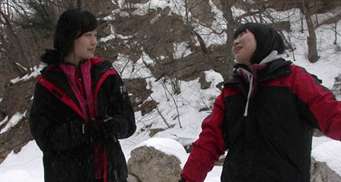
A Korean look at economic realities, class, and friendship
In this lively Korean study of how changes in social status restructure personal relationships, two young women who were friends as young girls meet again and decide to spend time together, with somewhat explosive results. Times have changed and their stations in life are now very different. One now is a lowly secretary at an international corporation, but living a relatively comfortable life. The other is a recently laid off part-time factory worker who has abandoned a hunger strike she shared with her comrades. When they're reunited at the corporate secretary's instigation and stay together for a while, their different economic realities and different perceptions of the world rapidly erode their childhood friendship. This may sound schematic, but intense acting and lively action make it real.
Jin-hee (Sung Su-jung) and Ye-won (Lee Hye-jin) were middle school classmates. Jin-hee is a factory worker turned pro-union labor activist. The intense and nervous Ye-won is somewhat exhausted by the tensions of her corporate job, a job that, as Jin-hee eventually points out to her, is at a place that doesn't allow unions, where workers have to tow the line unquestioningly. When she gets the opportunity to reminisce about the good old days with Jin-hee, Ye-won is eager to do so, and invites her old friend to come for an extended visit even though they now have little obviously in common any more other then a lingering enthusiasm for acting. Ye-won took an acting degree but went nowhere with it. Jin-hee had no such opportunity but shares the dream of acting success.
The fascination of this film is its representation of the economic and political through the psychological and social. This is a process narrative, and the process is one of disintegration and reintegration. At first the two women are like schoolgirls, going around hand in hand, laughing, singing school songs and getting drunk together. Then gradually things go wrong as the charade of comradeship is invaded by the realities of the separate and differently unsatisfactory lives. Jin-hee has no patience with Ye-won's lack of awareness of bad labor conditions in their country. When Ye-won gives Jin-hee a present of a locally made MP3 player whose company brutally exploits its workers, Jin-hee explodes with anger at her insensitivity. Ye-won lives in a bubble, totally aware of the local exploitation of labor.
Later, Jin-hee, who morphs from critic to imitator, begins to seem like the roommate from hell by the way she invades Ye-won's life, wearing her clothes and partying with her work associates and pestering her actor friends to let her audition (she memorizes a scene from Chekhov). Ye-won seethes with resentment, but Jin-hee is disturbed inside too. The honeymoon is over. The gradualness of the process is possible because the two actresses are both young and pretty. You can imagine them as interchangeable, had circumstances been different. Jin-hee's intense, almost pathetic enthusiasm for acting seems to enable her to become another person at times.
The film's title refers to Chekhov's Three Sisters, in which the lead characters long to return to the Russian capital and its imagined perfection. It's a scene from that play that Jin-hee learns. Chekhov's play becomes a constant theme. Its similar focus on vanishing wealth and personal discomfort and aimlessness of the sisters parallels the trajectory of Moscow. Ye-won's bourgeois origins grate on Jin-hee, whose family ran out of money and were forced to leave their home town and robbed her of the key to success -- a university education -- that was automatically provided to Ye-won. Resentment over this fundamental difference fills their current relationship with anger. At the same time Jin-hee is tormented by her loss of confidence in her labor union activities. Perhaps the two have more in common after all -- except for social awareness and economic circumstances.
Lee is subtle in the way she lets Ye-won's unease gradually reveal itself through little details. Sung has to be more overt in her portrayal because her character is less restrained but she's very good in what is a demanding role, and the understated finale where Jin-hee finally finally lets out her true feelings gives her an opportunity to show some nuance too. Both give fine performances, and they make the film work even though it suffers from delayed exposition and an ending that's protracted and anticlimactic. The screenplay by Kim Kyung Hyun could have used some tightening up. But in a male-dominated Asian culture it's good to see a strong, unsentimental drama about the relationship between two women. This isn't as sophisticated as the ironic skewering of male ego in Hong Sang-soo, but it's forceful and engaging.
Seen as part of the San Francisco International Film Festival 2010.
Last edited by Chris Knipp; 05-04-2010 at 11:40 AM.
-
Paul and Sandra Fierlinger: My Dog Tulip (2009)--SFIFF
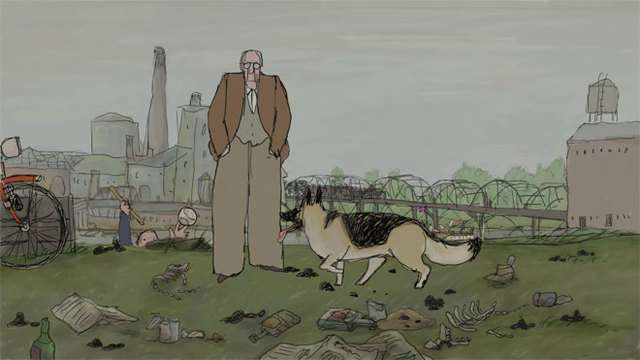
Dog days are good days
J.R. Ackerley was a writer for the BBC from its foundation in the late Twenties till 1959 who was openly gay, a thing unusual for the time. He wrote with wit, bluntness, and honesty about his remote, but important, relationship with his colorful dad in his remarkable little book My Father and Myself. His semi-autobiographical novel, We Think the World of You, was made into the 1988 film by Colin Gregg with Alan Bates, Max Wall, Liz Smith and Gary Oldman. Despite plenty of sex in his younger years, he never found a life companion in maturity, and he found that the most important emotional connection of his adult life was his relationship with his canine pet, his "Alsatian bitch," which he described in another book, My Dog Tulip. (The dog's actual name, by the way, was Queenie. )
This hand-drawn animated film, which is narrated by Christopher Plummer and includes the voices of Lynn Redgrave, Isabella Rossellini, and others, was adapted from that book. The images are of the charming, old-fashioned, wavery sort, a mixture of black and white line drawings and (more often) drawings colored in with watercolor. The entire film is constantly narrated by lines from the book. Somewhat oddly, when you see Ackerley on screen, he is usually represented as mouthing the words of the voiceover. You can ask yourself if the images were needed, since the words tell he same story. Sometimes events are understood better and more fully experienced in the mind's eye than when drawn for us with painful (or even witty) literalism. But the film brings the book, and Ackerley's wit and honesty, to a new audience.
The book certainly is suited to animation rather than other form, since it consists so largely of events it would be difficult to stage and unpleasant to watch. Events, that is, like Tulip relieving herself at untimely moments, "marking" objects outdoors; and a lengthy effort to mate Tulip with a male Alsatian. The latter fails, though she eventually mates with a little mutt and has eight puppies, which Ackerley is immediately forced by his landlord to get rid of. He considers drowning them, but gives them away. He admits he doesn't do so responsibly, since he kept no track of where they went. And Tulip herself had an unfortunate upbringing, which Ackerley thought led to her skittishness, excessive barking, and almost pathological eagerness to go on walks.
Ackerley took in his adult sister for a time in his Putney flat, partly to keep Tulip company while he was at work. A competition developed for Tulip's affections, but Ackerley won. There are various other characters, rude shopkeepers, owners of would-be mates for Tulip. Through a weekend with a former fellow officer we learn something about Ackerley's service in WWI.
This film is amusing. It is accurate in a way most accounts of canine pets are not. You won't get the profound understanding of canines of a Konrad Lorenz or César Milan. In fact Ackerley dramatizes how comically ignorant humans are of dogs' inner workings.
The book does not tell all. Its focus is very limited. Ackerley's relationship with Tulip (Queenie) was central in his life during those 16 years, which he says were the happiest of his life. Elsewhere we learn they were his most productive, partly because of his happy state, partly because Tulip's behavior in company reduced Ackerley's social life and so gave him more time to be writing. Considering that this was the relationship's central importance there might have been more about the physical affection between man and dog, the companionship, and how Ackerley drew sustenance from these. It seems somewhat peculiar that when Ackerley is talking about the more complex side of male-female canine relations the animators switch to black-and-white drawings of upright humans with canine heads and paws. It's their choice, not Ackerley's. Oddly, there is nothing about feeding the dog. But you clearly see how much of Ackerley's life was devoted to Tulip's needs, and you get a sense of how satisfying that was to him.
Despite shortcomings, My Dog Tulip is a significant contribution to the literature of canine-human relations and a chance to hear a wonderfully dry, articulate English voice of the Fifties. The film premiered at Cannes and was well received at Annency, Vancouver, Toronto, and other festivals. I saw it as part of the San Francisco International Film Festival in April 2010.
Last edited by Chris Knipp; 05-04-2010 at 11:46 AM.
-
John J. Healey: The Practice of the Wild (2010)--SFIFF
John J. Healey: The Practice of the Wild (2010)

GARY SNYDER WITH HIS DOG AND JIM HARRISON
A glimpse of Gary Snyder
This rambling short documentary about poet Gary Snyder's life and poetry begins with him saying some words from his book, The Practice of the Wild: “The wild requires that we learn the terrain, nod to all the plants and animals and birds, ford the streams and cross the ridges, and tell a good story when we get back home.” At one point in the film, Snyder mentions his distinction in the book between "nature," "the wild," and "wilderness." These are tantalizing hints at what the film might have been, an elucidation and extension of Snyder's complex and fascinating 1990 book, a collection about mankind's responsibility to the wild and duty to maintain a proper place on the planet and in his own space.
But that is not exactly what happens. The film instead mixes conversation at a dinner table, chats walking and sitting between Snyder and his friend Jim Harrison, readings by Snyder of a few of his poems, and historical footage with biographical notes on Snyder's whole life, his studies of Chinse poetry, years in Japan, some of it at a Zen monastery, his participation in the legendary Six Gallery poetry reading in San Francisco on October 7, 1955 (his poem about ritual, "A Berry Feast," came last, right after Allen Ginsberg's "Howl"), his move to the Sierra foothills, his long stint teaching at UC Davis. There are some valuable talking head comments on the "Beats" by Philip Whalen and Snyder's interest in the Orient by his former wife Joanne Kyge.
Linguist, poet, mountaineer, environmentalist, archeologist, teacher, lumberman, Zen Buddhist -- the number of roles Gary Snyder has played, the places he has lived, would strain a long, detailed documentary. Since the Eighties he has been more an environmentalist and at times seemed less of a poet, though the poetry has continued and has always expressed similar concerns.
This little 53-minute film is a nice introduction to Snyder or a souvenir for admirers. But as a treatment of the topic of the essay book it is a disappointment, and it seems like a hodgepodge, all relevant, because the man is so complex yet so unified, but superficial, when the ideas in the book are profound and challenging. Recommended: read what you can of Gary Snyder's Practice of the Wild. If you come away understanding a fourth or a fifth of it, you'll be lucky. And by all means read Snyder's poetry. Unlike Dylan Thomas, Edith Sitwell, T.S. Eliot, Robert Frost, Yeats, and some others, Snyder isn't a poet whose speaking voice seems essential to the appreciation of his texts.
The Practice of the Wild, the film, was produced by Jim Harrison and William R. Hearst III, and edited by Robin Lee. It is a production of San Simeon Films, San Francisco. Seen as part of the San Francisco International Film Festival 2010.
Last edited by Chris Knipp; 08-06-2014 at 01:52 PM.
-
Patric Chiha: Domain (2009)--SFIFF
Patric Chiha: Domain (2009)
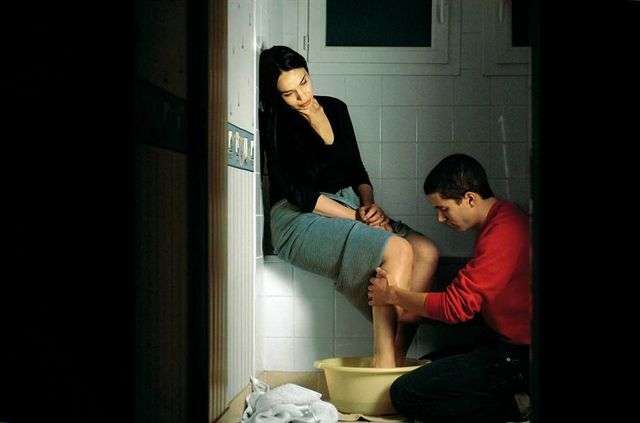
BÉATRICE DALLE, ISAÏE SULTAN IN DOMAIN
Gödel, alcohol, gayness
The new French film Domain (Domaine) by the Austrian director Patric Chiha, his first feature, should mainly be seen as a vehicle for the talents of the legendary, iconic Béatrice Dalle, for whom Chiha wrote the screenplay. Dalle has been in more than 35 films but may still be most remembered for her stunning debut performance (with the equally intense Jean-Hugues Anglade) in the 1986 Jean-Jacques Beineix film about a young woman going mad, Betty Blue (37°2 le matin). She also had a vivid small role in Claire Denis' intriguing 2004 film The Intruder (L'intrus). Dalle is the kind of off-kilter, stunningly assured performer you can't take your eyes off of. However, Domain irritates at least as much as it pleases with its "auteurist" pretensions and unconvincing or underdeveloped elements.
Nadia (Dalle) is a mathematician who is pursued by her lyçée student nephew Pierre (Isaïe Sultan) because he finds her far more interesting than his classmates or his own family; but in the course of the film her descent into alcoholism, which Pierre at first minimizes, eventually leads him to abandon her. He has begun to find his classmates more interesting and, perhaps more important, he has acknowledged his gayness by taking on a friendly, upbeat 26-year-old boyfriend -- though Nadia's decline remains the main focus of the film to the end.
One element that has been questioned is designating Dalle as a mathematician (specializing in Gödel, no less). For an actress who is best at playing a madwoman or an eccentric, this occupation seems unlikely, and it's a detail apparently added in to the screenplay as an afterthought to give Nadia something to do, or have done up to her current decline. Pierre is a perfect-looking young man who smiles a lot. His rejection of his family guidance, represented by little conversations in the kitchen with his mom, Jeanne (Tatiana Vialle), seem to cause him as little discomfort as his being gay. As Pierre, Isaïe Sultan's acting consists mostly of that smiling, and finally some crying. Everything is too easy for him to be true. He gets a perfect boyfriend called Fabrice (Manuel Marmier) simply by having a little conversation on a bus. If that's how it works in Bordeaux, where the main action takes place, all young gay men should consider moving there. Fabrice leads Pierre to spend fewer afternoons with Nadia, who seems to need Pierre more then he needs her.
Chiha has Nadia spout a lot of ideas about order, and how to walk (fast, with a good rhythm). Her relationship with Pierre at first consists of frequent after school strolls in the park. Later they go to cafés or clubs where she gets drunk and he has to help her home. Some have said this is a very French film, but it seems a very Austrian one, with its focus on geometry, direction, cleanness, order, and its finale in an Austrian resort hotel where Nadia goes for a cure, where Pierre visits her, but finds she has only sunk into greater despair. She sees her alcoholism as a decline into chaos. The word "Domain" itself suggests an area of control. This movie seems to have a weak grasp of the actual. It avoids movie clichés of alcoholic behavior, but loses touch with reality in its exclusive focus on an odd relationship between a teenager and a forty-something woman that lacks motivation and depth.
We are forced to endure pointless scenes at bars with the only friend of Nadia who doesn't abandon her, a dubious character called Samir (Alain Libolt), or eating bad pizza at home, again with Samir, or watching a gaunt gay cabaret singer whose stage name is Joan Crawford. The music is alternately too light or too obtrusive, and the low-light scenes have poor image quality, though landscapes and closeups of the two principals are fine.
There are lots of faults in Domain. And yet the very preposterousness of the connection between Pierre and Nadia and the theatricality of their brisk walks wind up making their relationship memorable. Isaïe Sultan has enough presence to hold his own with Dalle, and Dalle is hypnotic and fun to watch, a figure of such defiant assurance that you can almost believe anything attributed to her. And the actress' own history of substance problems adds conviction to her performance as someone who finally says drinking is "all I do." This film, which opened April 14, 2010 in France, did only moderately well with French critics according to an Allociné rating of 2.19/35; some found it interesting, others not, but all praised Dalle.
Seen as part of the San Francisco International Film Festival 2010.
Last edited by Chris Knipp; 05-05-2010 at 11:42 PM.
-
José Manuel Sandoval: Te creís la más linda (2008)--SFIFF
José Manuel Sandoval: Te creís la más linda (2008)
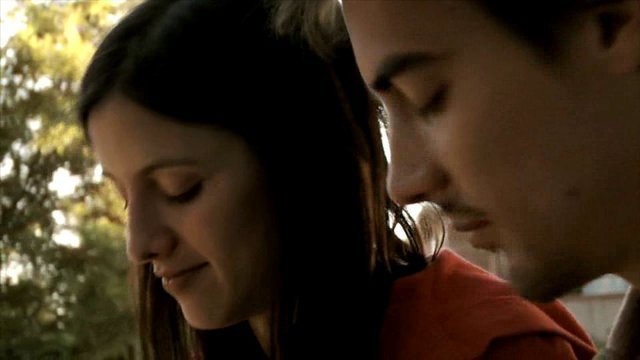
CAMILLA LE-BERT AND MARTÍN CASTILLO IN TE CREÍS..
Boy talk
Martín Castillo plays Javier, the slim, doe-eyed, slightly scruffy 19-year-old hero of this very vernacular, talky, flavorful Chilean youth picture written by the 25-year-old José Manuel "Che" Sandoval, divided into diaristic chapters with chatty headings and titled overall You Think You're the Prettiest, But You're the Sluttiest -- Te creís la más linda (pero es la más puta). Camila Le-bert is Valentina, the neighbor he would like to make his girlfriend. Francisco Braithwaite is Javier's artsy best friend Nicolas, whose talk is even more pungent than Javier's. With his playful, nonstop jive talk, Javier negotiates Valentina into going to bed with him -- he's nothing if not a talker -- but then very soon afterward she sleeps with Nicolas, so Javier tries to make it with Nicolas' regular girlfriend in revenge, but she's not interested. Then he goes on a little odyssey, winding up more bedraggled than ever but just as charming and indomitable, as the film ends, in front of Valentina's house.
This is the modern generation, whose talk is slangy and dirty and focused on "soccer, video games and the content of your iPod," as a festival blurb intones. This cinematic chronicle of a couple days in a young man's life, which was young Sandoval's thesis for film school, is more about a needy, ironic sensibility than about any specific events. Castillo is remarkable, mouthing Sandoval's lines as if he wrote them himself -- a lot of the time he is improvising them. Sometimes, especially in the early dialogue when he's wooing Valentina, the chatter so concentrated on wordplay and showing off that it almost makes no sense, but that's when it's best, when the film really sings.
And anyway, it's obvious what Javier's about. The defining moment comes when, after a long night leaves him battered and bruised in the morning, Javier sidles up to an aging prostitute, the real thing. ("Puta," prostitute, is one of the kids' favorite words. ) With motor-mouthed eloquence Javier tells her, speaking for himself and the audience more than for her, that the ones who give it away for free are more "puta" than she is, who is a "puta" only as a job -- and, moreover, she says only on Saturdays. She's really old. But as she speaks, her face becomes both beautiful and elegant. She may indeed have more class that the girls Javier tries to take to bed. Trying to live the "puta" life is all he does himself, he also declares; he just doesn't succeed: he's "an expert at fucking up."
People come and go and tell their stories, most lamely a guy at a bar who says his girlfriend has gone off to Spain to study art, emptied their house, which belonged to her family, and sent off their two kids to be cared for elsewhere. Javier isn't moved. He thinks his sufferings are equal. He's the center of his world. We never see his parents. Valentina's mother is only a voice from her house. The way Javier slips back into a conversation with Valentina after the closing credits is typically sly and natural. This kid never succeeds but he never quits either. He is the embodiment of a certain kind of youth.
Te creís la más linda (pero es la más puta) premiered at the Valdivia Film Festival in Chile in 2008. The cast also includes Andrea Riquelme (Francisca), Sebastian Brahm, Paula Bravo, Grimanesa Jimenez (the prostitute), and someone or something called Ramirez! The cinematography is by Felipe Bello; the editing is by Manuel Piña (who doubled on the sound) and Sandoval. The film was shown as part of the San Francisco International Film Festival 2010, in competition for the New Directors Prize. Not much other information is available about it on the English-language Internet, but it has been in other festivals, as its trailers show. It has something in common with Alex dos Santos' 2006 Glue and the films of Fernando Eimbcke and Gerardo Naranjo. It's especially notable for its emphasis on the rhythms of contemporary language, and its motor-mouthed hero is a portrait of a sensibility that is both of today and classic. Times have certainly changed, but there is something of Holden Caulfield in Javier. This is a 21st-century Hispanic Holden struggling to maintain the integrity of his fledgling male ego. Another vivid illustration of the energy of Latin American filmmaking: Che Sandoval is a young director to watch.
Currently (June 1, 2014) you can watch the whole film on YouTube here with English subtitles: enjoy.
Last edited by Chris Knipp; 06-01-2014 at 11:51 AM.
-
Marcos Andrade: Transcending Lynch (2009)--SFIFF
Marcos Andrade: Transcending Lynch (2009)
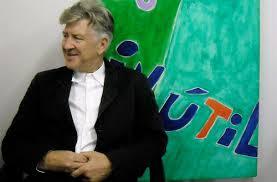
LYNCH PREPARES TO MEET THE PUBLIC IN TRANSCENDING LYNCH
David Lynch in Brazil, talking about TM and dropping hints
David Lynch, the great American filmmaker, is a distinctive-looking man with a bland, pasty face, pale blue eyes, and an impressive mound of sleek, wavy hair. He wears well cut-suits with good white shirts, often buttoned up without a tie. He smokes and drinks many cups of espresso. When he speaks, the American twang of his voice surprises. For 35 years, since he made his first film, Eraserhead, he has practiced Maharishi Mahesh Yogi's "transcendental meditation" (TM) twice a day. He rarely speaks of his work as a filmmaker without mentioning this, and saying that it has enabled him to deal with the dark side of his consciousness, as well as with the nervousness and fear he once felt. (Obviously the stylish and original way his films explore that dark side is the chief source of their fascination.) Recently Lynch went on book tour with the singer Donovan to talk about his Catching the Big Fish: Meditation, Consciousness and Creativity and promote an interest in transcendental meditation. Marcos Andrade is a native of Rio de Janeiro who studied filmmaking in New York. His first film was the 2004 Korda, a wordless story of a solitary man. Practicing TM himself for a few years, Andrade became involved with the David Lynch Foundation through his meditation teacher. Andrade made this, his first documentary film, by following the Brazilian leg of Lynch's TM book tour.
It's not a sure thing that this film will convert you to TM, or even tell you much about it. This is best seen as a film about David Lynch, one with not much substance in itself, but of value to anyone who truly admires the man's work, who perhaps has met the man before, or just heard him in a Q&A, caught a appealing whiff of his aura, and wanted to catch more. In numerous chats and public appearances during the film, Lynch tends to dodge the inevitable requests for, say, the meaning of the blue box in Mulholland Drive, or a list of his favorite contemporary filmmakers, but the aura is there, and sometimes though smilingly refusing to explain anything he draws a nice picture of the genesis of a film -- a song, say, red lips, green grass at night, an ear found in a wood, a mystery "somewhere" (Blue Velvet) These little asides have more value than the more airy declarations about TM and what it can do for you.
Similar comments about the book's limitations can be found on Amazon. Publisher's Weekly bluntly says "Lynch's rants lack cohesion and substance." Lynch paints and draws, he dabbles in music, he writes, and who knows what else, while he's waiting for the idea for his next film to come to him. No need to pretend these other things matter the way Blue Velvet or Mulholland Drive or Inland Empire do. But there is always something about the man, that, if you transcend yourself and attend to it, gives watching and listening to him an almost ineffable value so long as you've ever been touched by the magic of his films.
Andrade sometimes indulges himself in little riffs of his own, like wordless passages of Lynch and his tour organizer talking, without sound, as "Blue Velvet" plays and we gaze through a blue filter; or shots, deliberately allowed to run on too long, of a crowd wandering round at a reception; a walk through an airport run backwards. We can be patient with those, and this is a film about patience. Lynch is also a model of how to respond helpfully and with good humor to endless annoying questions. Some of them are obvious, like the answer to "What is your favorite among your own films?" -- they're like children, and I love them all equally -- but Lynch replies with unusual enthusiasm and panache. He's a good intuitive teacher. He even compares transcendental meditation to the good times he spent in Los Angeles at Bob's Big Boy Diner drinking coffee and chocolate milkshakes. It provides a safe place from which you can contemplate the darkest ideas. And "a good story," he casually remarks, requires conflict, pain, dark moments.
Brazil plainly loves Lynch,and how could he not keep his good humor receiving constant adulation? But this film may have done more good for him than it does for us. Still, it has its moments, for the Lynch fan, of which I am one. He drops a few useful hints about how David Lynch films come into existence.
Seen at the San Francisco International Film Festival 2010.
Last edited by Chris Knipp; 06-01-2014 at 11:31 AM.
-
Brian Byrne: The Loved Ones (2009)--SFIFF
Brian Byrne: The Loved Ones (2009)
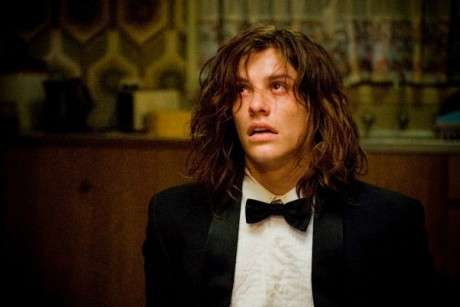
XAVIER SAMUELS IN THE LOVED ONES
A painful end to high school
Heavy metal is an effective background for this gore-fest from Australia, about a young man tortured on prom night by a girl he refused to date. Late Night item at the San Francisco International Film Festival, it was similarly featured in the Toronto Festival's Midnight Madness series last year, where it won the Cadillac People's Choice Award for its brightly hued, well-shot nastiness. I don't particularly enjoy this sort of thing, but they're good at the down-and-dirty genre thing down under, and this first-time director shines in his use of sadistic evil, brave resistance, and the usual weapons of mayhem, razors, a power drill, a torture pit, and cars that run astray and kill or maim people. He also makes us care about and understand his characters. The Loved Ones focuses on teen angst and family dysfunction within a horror genre format. It's been called a fusion of Pretty in Pink and Misery, with a dash of Carrie.
In an introductory sequence, Brent (Xavier Samuel) is driving on a highway with his father beside him when he swerves to avoid a bleeding shirtless man (a harbinger of things to come) and hits a tree, killing his dad. His mother falls into a catatonic state from the shock of this. This is a prelude to Brent's senior year in high school. As graduation approaches, Brent's coping with his grief and survivor guilt through a blend of rock climbing and good weed, heavy metal, hanging out with his girlfriend Holly (Victoria Thaine), and taking long walks with his dog. When Lola (Robin McLeavy) comes up in the hall and invites him to the prom, he naturally tells her he's going with Holly.
Brent gets kidnapped on prom night by Lola, who holds him prisoner at her house and tortures him, aided by her equally creepy dad Eric (John Brumpton). She turns out to have kept a weird diary, and during Brent's torments, she and her dad take Polaroid photos to add to it showing dressup games involving the hapless and bravely silent Brent. As Rod Armstrong, the SFIFF planner of genre film showings, writes, "Brent is a remorseful, laconic hero who finds a visceral desire to live amid the most extreme circumstances. " Since the film has already spent enough quality time with him before his ordeal for us to get to know him, Brent's silence during the horror segments is an original device that works well.
Reviewers have differed on whether it makes sense for Byrne to keep shifting back and forth between Brent's prom night from hell and his best friend's evening with his date, which goes wrong in a more conventional way. It's true the film might have been neater if the two separate plot lines were joined toward the end, but the subplot functions to remind us this is prom night and to add suspense as well as relieve us from having to watch nonstop goriness. In the subplot, Byrne, who wrote as well as directed, shows his ability to combine a convincing kind of John Hughes-style teenage lifestyle study with his dive into nightmare cruelty. There's a nice irony in the fact that an ordinary bad date, who just misbehaves at the dance, can create a parallel sense of nastiness. And make no mistake about it, Lola becomes a fully developed character in her own right as, during her deranged behavior, she reveals the mentality of a warped nerdy girl filled with jealousy and rage. Byrne shows he is as good at writing as he is at action.
The acting is uniformly good, and Simon Chapman's cinematography deserves much credit for creating the bright hues on a limited budget. Byrne is a talented young man, and Hollywood reportedly is after him. Samuels has a part in the third Twilight film.
Seen at the San Francisco International Film Festival 2010.
Last edited by Chris Knipp; 06-09-2010 at 09:27 PM.
-
Jessica Hausner: Lourdes (2009)--SFIFF
Jessica Hausner: Lourdes (2009)

SYLVIE TESTUD IN LOURDES
Hallalulah (maybe)!
This film starring the pinched and fearless Sylvie Testud is about a miracle. And so it takes place at Lourdes, in France, the mountainous shrine where thousands seek a cure. Hausner's approach, documentary-like, Bressonian, a restrained social comedy that's also a study of faith, never mocks, but keeps its observant distance from this heavily religious environment where special things are supposed to happen (but mostly don't). Lourdes is a wonderfully dry film about scary things, and it's no surprise, therefore, to learn that the director, who is Austrian but here works in French, learned her trade with Michael Haneke.
Christine (Sylvie Testud) is a paralytic, unable to move arms or legs due to multiple sclerosis. She comes to Lourdes on a kind of religious tour, whose members include the disabled or ill, family members, or mere hangers-on like the two middle-aged women, Frau Huber and Frau Spor (Linde Prelog, Heidi Baratta), who gossip and comment throughout like a snippy Greek chorus. Presumably they are along for a spiritual cure rather than a physical one; the priests who minister to the pilgrims constantly suggest that is what they should all seek. The group is cared for and supervised by women volunteer nurses dressed like nuns, and by uniformed male members of the Knights of Malta, who include Kuno (Bruno Todeschini), a man both kind and handsome. As for Christine, she merely says such trips are the only times she gets out. She remarks to Kuno, who takes an interest in her, that she really prefers the cultural tours to the religious ones like this one.
Many of the scenes in Lourdes are collective, and are filmed amid actual crowds and ceremonies at the shrine, in its grottoes, its buildings, in front of its shops, often from a certain distance. This creates a sense of space that subtly conveys Christine's paralysis -- we're just specks on the wall observing helplessly -- and also gives a sense of a slow, relentless process that's going on all the time. And again there is a sense of helplessness, for the crowds move along hoping wanly for relief and finding only boredom and fatigue, though much of what we see is beautiful, the stately processions and ceremonies, the priests in full regalia, the thousands of candles shimmering in the darkness.
The way Christine is cared for is a slow ritual. She's formally dressed and undressed, her hair combed. She's laid into her bed and the covers pulled up, the mattress jacked up to raise her head. But at one point Maria (Léa Seydoux), the young volunteer taking care of her, simply walks off and leaves her and Madame Hartl (Gilette Barbier), an older woman in the tour who shares a bedroom with Christine, begins pushing her around. Later the volunteer in charge of the tour, Cécile (Elina Löwensohn), a woman in extremis herself, as it turns out, rebukes Christine for allowing herself to be brought to the head of a line. You won't get cured by cheating! Gradually dialogue reveals the many doubts and suspicions, as well as jealousies, that swarm around the scene. There have been miracles, but then they didn't last. Someone got up and walked, and later became crippled again. And then it wasn't a "miracle" and was discredited. It was personal, idiosyncratic, inauthentic.
When the miracle comes to Christine it's a surprise even if we might have suspected it. This is thanks to Hausner's skillful pacing and to Testud's deadpan performance, which reveals neither anger nor hope. During confession, she has told the priest she often asks "Why me?" but then when she's cured, or seems to be, others around are quick to ask, "Why her?" She is not a person of faith, though of course she must have hoped.
Hausner's film is off-putting and, though in theory rather droll at times, not very enjoyable. But it is a very detailed look at the ego and backbiting of some religious groups. They seem to bring together the kindest people with the meanest people, and sometimes it is hard to tell which are which. The film's coolness and avoidance of sentimentality (or chortling) makes its everyday examination of faith the more thought-provoking. And though the people at Lourdes are highly flawed, that doesn't mean something wonderful may never happen.
In a thoughtful review The Guardian's Peter Bradshaw has called Lourdes a "superbly subtle, mysterious and brilliantly composed film," and he is right. And it's also occasionally very droll; but that doesn't mean that it is a barrel of laughs.
Seen as part of the San Francisco Film Festival 2010.
Last edited by Chris Knipp; 05-05-2010 at 11:51 PM.
-
Ivan Engler, Ralph Etter: Cargo (2009)--SFIFF
Ivan Engler, Ralph Etter: Cargo (2009)--SFIFF

THE COSTUMES ARE A LITTLE BIT STARTREK
Asleep in space
Cargo is the first Swiss science fiction film. It takes place in space, on a great interplanatary transport ship, and its events call to mind Aliens, Sunshine, and Moon. It's a story of suspicions, unveiled conspiracy, revolt. The sets and the effects are grandiose. "Is this the great new Sci-Fi space epic?" publicity teasers ask. Well, no, it sure isn't. It's an overly-familiar, under-stimulating movie that winds up being very hard to care about or even follow, because the plot doesn't jell and the characters aren't fleshed out. The fancy accoutrements are just empty decor for a film that in toto is too underwritten.
The heroine of Cargo Laura (Anna-Katharina Schwabroh) is a doctor who has joined the ship's crew to earn money, presumably lots of it, for working on a journey to a remote location that will take light years to get to and from. The time is about 200 years from now, the Earth is largely uninhabitable, and the lucky humans inhabit a halcyon far-off planet called Rhea which has been given a makeover so that it somehow duplicates the earth at its healthiest and most fertile, as we see in scenes shown in messages from Laura's sister, who lives on Rhea. Only the rich can go there but Laura hopes to make it.
Things sound pretty familiar. Everything is controlled by large corporations. There is a threat of terrorism on these cargo flights. Consequently a man called Dekker (Martin Rapold) -- perhaps a homage to Blade Runner -- comes on board as a sky marshall counterterrorism officer. There's a tight-lipped mean lady called Arianne (Maria Boettner ) who takes over when the captain, Lacroix (Pierre Semmler) gets shot. I didn't catch the captain's name; he wasn't around long enough.
The ship runs automatically, and only one crew member need be on duty at a time. The rest put breathing masks on and are lowered into cryo-sleep in a kind of thick soup that freezes them off till their services are needed again. When Laura is on duty, she hears loud noises and realizes somebody else is out there in the storage area. She investigates, and soon learns -- and read no further if you don't want to know what happens -- that the ship doesn't contain normal cargo at all. It's full of cryo-sleeping people wired in a Matrix-like system and the ship is docked somewhere, broadcasting messages to people (somewhere, we don't really know very well where everybody is) because, doggone it, Rhea is just a simulation! The actual Rhea was an experiment that failed miserably, but the big corporation that runs things wants people to believe in it so they'll invest in going out to live in space stations. Eventually Laura finds out a few more things -- most importantly, that parts, at least, of Earth actually are inhabitable again, and the corporation is trying to keep humans from going back to live on their own home planet.
All this is very sketchy. Most of the film's time is spent with banging around in and out of the space ship. The latter part, where several people float around outside and dock with miraculous precision for no comprehensible reason, is embarrassingly badly executed. Cargo fails for several reasons. It is so derivative that it arouses comparisons that are never to its advantage. When one thinks of Duncan Jones' recent film Moon one realizes how a simple, low budget space travel film can have much more psychological depth than this. A moment's thought of Kubrick makes one realize that this grandiosity is in fact shallow and without real resonance. Remember the opening scenes of Aliens or the closing ones of Sunrise and you can see these characters and their interactions aren't made three-dimensional or interesting enough. You can't care about Cargo's characters and their conflicts because you have not learned who they are. It's unfortunate that they keep going off to cryo-sleep. Scenes were needed to show who they are, what they do, how they interact. Cargo puts the viewer into vicarious cryo-sleep after a while.
The film's best moments occur when we are floating around in the ship's vast hold with clanging containers moving inexplicably but menacingly around. Perhaps if the filmmakers had used a much simpler plot with mostly wordless action they might have made something suspenseful and beautiful. Cargo is of limited interest to any but hard core Sci-Fi fans, some of whom will enjoy the homages and, I guess, the clanging cargo containers. The Swiss can go back to making chocolate and watches.
Seen as part of the San Francisco International Film Festival 2010. One can see why it was included. It's a novelty, of sorts.
Last edited by Chris Knipp; 03-18-2015 at 05:57 PM.
-
Joann Sfar: Gainsbourg (Je t'aime...moi non plus) (2009)--SFIFF
Joann Sfar: Gainsbourg (Je t'aime...moi non plus) (2009)
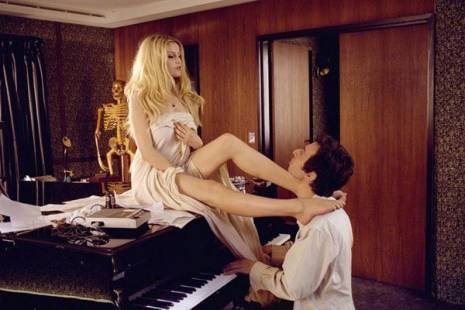
BARDOT (LAETITIA CASTA) AND GAINSBOURG (ELMOSINO): HAVE SEX, WRITE A SONG
A French icon of many songs and many loves
The French title of this biopic of the great French singer-songwriter, personality and womanizer, which opened in France January 10, 2010, is Gainsbourg (vie heröique). The subtitle "Je t'aime...moi non plus" is the title of Gainsbourg's most famous song, sung in a duet with Jane Birkin. This is the first non-animated feature of a major young French artist and writer. The 39-year-old Joann Sfar is himself a current cultural icon, having penned over 150 comic books and graphic novels for adults and children, including a graphic novel version of Antoine de Saint-Exupéry's classic The Little Prince and his creation of a (1930's Algerian) rabbi's talking cat, Le chat du rabbin, a popular series soon to become an animated film. With this in mind it is not surprising that Sfar's biopic has, briefly, a talking cat; has a giant head from an anti-Semitic poster that comes to life; and gives its hero, Serge Gainsbourg, né Lucien Ginsburg, a tall, lean double, "La Guelle," the embodiment of his ugly mug, who follows him around throughout his life goading him to do naughty things and causing him trouble. It's a Dr. Jekyll-Mr. Hyde idea close to Gainsbourg's own later sense of himself.
As biopics go this one is richly evocative and appealingly frank and free. It's bluntly truthful about Gainsboug's womanizing and abuse of cigarettes and alcohol -- and his extraordinary exploits. He was the lover of a jaw-dropping stream of beautiful and amazing women, including Juliette Greco, herself one of France's most celebrated singers, Brigitte Bardot, and, most turbulently and lengthily, the famous English model and actress Jane Birkin. Birkin and Gainsbourg had a daughter, Charlotte Gainsbourg, now an internationally known actress and French icon in her own right. The film features a mouth-watering female cast. But it obviously isn't dutifully realistic or thorough. It doesn't even contain a great many of his songs, though singing is an important element in it. Best of all, Sfar doesn't feel obligated to follow his protagonist doggedly to the bitter end. He finishes off with beautiful abruptness somewhere in the early Eighties, when Serge was drunken but still very vigorous.
Gainsbourg is played by Eric Elmosnino, who has an ugly mug amazingly close to the real Gainsbourg's and who settles into the role with utter confidence, the more so in the later, more outrageous stages of the part. It seems lucky that Sfar's earlier ideas of using Charlotte Gainsbourg or Matthieu Amalric in the role had to be jettisoned in favor of a less-known actor who can more independently embody the man. One of the best elements of the film, however, is its early segment featuring the young, then, Lucien Ginsburg, played by the 10-year-old Kacey Mottet Klein as an irrepressible young sprite willing to try about anything. This shows the future songwriter in WWII boldly mocking authorities who make him wear a Star of David, trying to be an artist, puffing on cigarettes and persuading a curvaceous model to strip for him because he claims he can't draw a bra. His Russian Jewish father, who plays piano in a bar, forces Lucien to study piano, but is unsatisfied with the results till he hears him play a song at night. "You play better at night," he says.
Sfar was significantly helped by David Martí and Montse Ribé, 2007 Oscar winners for their work on Guillermo Del Toro's Pan's Labyrinth. They are responsible for the makeup and invented creatures that augment the biopic element so nicely.
Gainsbourg is a figure of such continuing significance, and wrote music in so many genres, that he touches all generations of the French today. Americans can hardly imagine such national appeal in a single artist, whose music 2010 French twenty-somethings will tell you you absolutely must listen to and of whom when he died in 1991 the then French President François Mitterand said, "He was our Baudelaire, our Apollinaire... He elevated the song to the level of art." With its big, fascinating cast and its wealth of unrolling incidents, this film begins to do justice to the man and his chaotic, intense life, but its best homage of all is its lightheartedness and flair.
The film has been warmly received in France with a 3.8/63 Allociné critical score. Serge Karganski in Les Inrockuptibles wrote: "An ultra-personal biopic, elegant and sparkling, playful and serious, heavy-light, as was Gainsbourg himself... A complete success." Gainsbourg is an entertaining film worthy not only of further festival exposure but of wide US distribution, and it has just been seen at Tribeca and the San Francisco International Film Festival. I saw it at the SFIFF.
Last edited by Chris Knipp; 08-06-2014 at 01:41 PM.
-
Robert Cibis, Lilian Franck: Pianomania (2009)--SFIFF
Robert Cibis, Lilian Franck: Pianomania (2009)

STEFAN KNÜPFER AT WORK
A piano tuner's obsessiveness
This little documentary by a pair of Austrian filmmakers could be seen as a publicity film for German Steinway. It's about Stefan Knupfer, a Steinway concert technician, and reveals their (i.e. Steinway's) obsessively high standards and extreme precision. His name is Stefan Knüpfer and he is a Steinway concert technician. Knüpfer is a piano tuner, but on a more exalted level. He is prepared to go one-on-one with famous concert pianists, making sure before they give a performance or make a recording that they have the piano they want and it's tuned the way they like it.
There are several pianists who appear in this film, but as we shall see, all but one are hardly more than filler.
There is a classical comedy team, a violinist and pianist, Igudesman & Joo, who put on a show called "A Little Nightmare Music." Knüpfer fools around with them a bit. Lang Lang comes in before a concert and tries the piano. It's commented that it's hard to get him off the stage before a concert; and then he's seen at the recital doing one of his embarrassingly showy performances, making a complete hash of a Liszt Hungarian Rhapsody and receiving an ovation from his devoted fans afterward. The very gifted young Austrian pianist Till Fellner appears and makes a few interesting comments on types of piano sound. Fellner is a pianist who plays with great fluidity and grace, sometimes a little too great: his performances, though fine, can emphasize fluency over revelation. I was hoping for more of revelation from this film. It can be had in other films about classical piano, such as documentaries about Sviatoslav Richter, several on Glenn Gould; or the wide-ranging film, The Art of Piano. This is not on that level.
Alfred Brendel appears briefly -- a very great pianist in his late years, and an Austrian. He makes a simple comment that for a concert a grand piano should be tuned to have equal response along its whole keyboard, and that's that.
Pianists are, as the film notes, usually dissatisfied, very often liking only a part of a performance, and finding minute flaws in the pianos they play on. They have chosen the piano for concerts when they could. Since a piano is a large and heavy instrument that's hard to move around, that hasn't always been possible. Horowitz had his own specially designed piano that traveled with him, and in the Fifties before an early Columbia recording session a young Glenn Gould was filmed picking out a piano from a warehouse full of them at Steinway in New York. Gould seemed to favor "clarity" of sound for recording Bach. (Of course the terminology on these matters tends to be sui generis and moot.)
Pierre-Laurent Aimard, a French classical pianist fluent in German, is the man who provided Pianomania with its substance and its drama. Knüpfer and Aimard were made for each other. They are both to an equal degree obsessively precise about piano sound and piano tuning. One can frankly say they're both equally neurotic. Aimard is getting ready to record Bach's austere final keyboard work, The Art of the Fugue, on a modern piano. He seems to have some sort of idea, perhaps inspired by Knüpfer's willingness to please, of using several different pianos in the course of the recording, one to have an "organ" sound, another to have a "clavicord" sound, and several others tuned to other sounds. It's never quite fully spelled out. No doubt about the fact that Aimard has a precise and obsessive ear. Knüpfer exclaims that he can spot minute changes in tuning instantly without being told. And best of all for Knüpfer, Aimard is never happy. He has a way of saying "fine," and then after a pause, "Frage..." (Question...) And after that he'll express a doubt, a worry. And that may lead to the whole piano's being moved out in favor of another one that has to be hunted down in a warehouse -- as Knüpfer nervously does a heavy piano seat for Lang Lang, though it's not clear whether Lang Lang uses it or not.
For the "organ' sound, Knüpfer resorts to a system of three plastic baffles on the piano, meant to expand the sound. At the point when the two recording engineers come on the scene things become a more grounded in reality, however. They seem to view all this fuss over the precise details of the pianos as like the medieval question of how many angels can dance on the head of a pin. The baffles turn out to be a disaster. They were an idea to project sound out in a certain way to the audience of a concert. Things work quite differently with a system of microphones being used to catch the sound. It's never fully clear what the different piano sounds that Aimard wanted were, and how he used them. What is clear that he and Knüpfer enjoy working together -- and that Knüpfer can do all sorts of things to alter piano sound. When he finds out that the hammers of a piano soon to be used in performance are seven tenths of a millimeter off, he freaks out. He winds up having new ones sent to him, and stays up all night to install them. He relates that once a Japanese engineer found a big lump of dust inside the works of one of "his" pianos. He said, "Put it back!" and points out that anything you move can change the sound and throw it off. He sometimes wiggles things around, or puts little dabs of cotton along the strings.
Ultimately this little documentary, for all its interesting obsessiveness, is a disappointment. It would have been better if it had been more instructive, more wide-ranging. There is not enough about music. Even Aimard's recording of Bach's Art of the Fugue -- the project that is the film's greatest drama and gets Knüpfer in such a state of nervous excitement -- isn't really followed through on. What did it sound like? Were the different piano sounds achieved? We don't find out. And Pianomania is not enough about pianists. All this fuss and precision mean little without great pianists to profit from them. Lang Lang's gyrations tell us nothing. Brendel and Fellner tell us something, but it would be better to hear from a real range of classical pianists about piano sound and to see them interact with Knüpfer. In between sequences the filmmakers insert a series of stills of the the city where Knüpfer is working. It's just postcard stuff, and a commonplace kind of filler for films on classical music.
Seen as part of the San Francisco International Film Festival 2010, where it won the award for Best Documentary Feature. The prize for Best Investigative Documentary Feature went to Lixin Fan's Last Train Home.
Last edited by Chris Knipp; 05-07-2010 at 08:40 PM.
-
Pedro González-Rubio: Alamar (2009)--SFIFF
Pedro González-Rubio: Alamar (2009)

NATAN AND JORGE WITH BLANQUITA IN ALAMAR
Portrait of three generations bonding by a coral reef
Pedro González-Rubio, who is 34, was born in Belgium of Mexican parents and is a frequent visitor to India, where he spent a year in his teens. He studied media in Mexico City before attending the London Film School. He has been the cinematographer for several films, among them Born Without (2007) by Eva Norvind. Toro negro (2005) was his documentary debut. Alamar won a Tiger Award at Rotterdam. Working alone except for his sound man Manuel Carranza and another photographer to photograph the underwater diving, González-Rubio captures the intimacy of a father and his young son in an idyllic setting in this short film.
A cattle egret (Bubulcus ibis) they call Blanquita becomes a house pet when Natan's father takes him to spend the summer by the sea, ala mar. They live in a hut on stilts and spend most of their time fishing with the boy's grandfather Nestór. Banco Chincharro is the richest coral reef site in Mexico and part of the second largest coral reef barrrier in the planet," an after-title says. This is where Jorge Machado, his father, and his little boy Natan are, and dive to catch big crabs. Jorge, 30-something, is learning how to line fish at sea from his father, and they catch big fish easily. Natan comes along on all their outings and takes to it all like a fish to water.
Jorge and Natan's mother, Roberta Palombini, were in love but after Natan was born she found Jorge's world too remote, and they divorced and she took Natan to raise him in Rome. In a prelude we see her get him up, wash him and dress him to go and stay with his father, all the while talking to him in Italian. When he's in Mexico, he speaks Spanish with father and grandfather, learning new words all the time, remarkably fluent. The minute he is back with his mother he instantly begins speaking Italian again. This symbolizes the boy's seeming ease in adjusting to the two different worlds. This is a dream vacation, an idyll, for Natan and his father, who lets him share in everything and obviously adores him. After Blanquita goes off on her own again he takes Natan to look for her. He plays with Natan like a big brother but instructs and corrects him like a father. His own father is an easy-going, benevolent fisherman, still youthful, loving his life. Jorge is a lean and supple man of Mayan heritage with long flowing hair and an earring, a modest naturist who wears shorts but otherwise is naked and knows the names of species. Who is he? What is his usual life?
Alamar doesn't explain everything. It shows this is an interlude in Natan's life. When Jorge tells him it's over but he will be with him wherever he is he quietly cries. People have discussed whether this is a narrative feature or a documentary, concluding that it is both or neither, that it doesn't matter. It's not quite a feature, because it doesn't add enough of a made-up story. It's not quite a documentary, not the earnest social and political kind, investigating a subject or lecturing us on it. Gonzáles-Rubio has said in interviews that he gave Jorge and Natan "tasks" to do, each day, and then filmed them. So he was the organizer of their activities. The whole thing in Alamar is the experience of Nathan with his father and grandfather; the film was made to show the special rapport between Natan and Jorge that the director had spotted earlier. The film lets us revel in the naturalness, the simplicity, and the pleasure the three generations experience together. There's nothing but good humor and affection, never an unkind word spoken. When Jorge coaxes Blannquita to climb on his arm and then passes her onto Natan's arm, it's a magic moment, however momentary, of patience, gentleness, and sharing among generations and species that we can carry with us as Natan will carry his memories of the summer with his father with him.
The film is not about how the coral reef, a protected area where some 40 fishermen live, may be threatened by encroaching urbanism and pollution. It's not about the economic details of Jorge's or his father's life. It's not about the pull between Natan's urban life in Rome, where he says "they don't fish" because "the fish are already in the store," and his back-to-nature idyll or idylls (are there more?) with his father in Mexico. But if these are lacks of context, they aren't bothersome because González-Rubio has so memorably captured the intimacy and joy of Natan and his "papi" and their physical grace together.
Alamar has been bought by MK2 and will be released in France shortly. It produced by Jaime Romandia (Carlos Reygadas’ Silent Light, Battle in Heaven and Japón, and Amat Escalante’s Los Bastardos and Sangre). It was introduced at Venice and shown at Rotterdam and Toronto and won the Ibero-American Competition Grand Jury Prize at the 2010 Miami Film Festival and the Best Film Award at Buenos Airesl. It will open commercially July 14 at Film Forum in New York and in March was screened at the BAM Rose theaters. Film Movement is making Alamar available on DVD simultaneous with its commercial run in New York.
Seen as part of the San Francisco International Film Festival 2010, where it won the New Directors Award, which includes a prize of $15,000.
Last edited by Chris Knipp; 08-06-2014 at 01:35 PM.
 Posting Permissions
Posting Permissions
- You may not post new threads
- You may not post replies
- You may not post attachments
- You may not edit your posts
-
Forum Rules








 Reply With Quote
Reply With Quote














Bookmarks